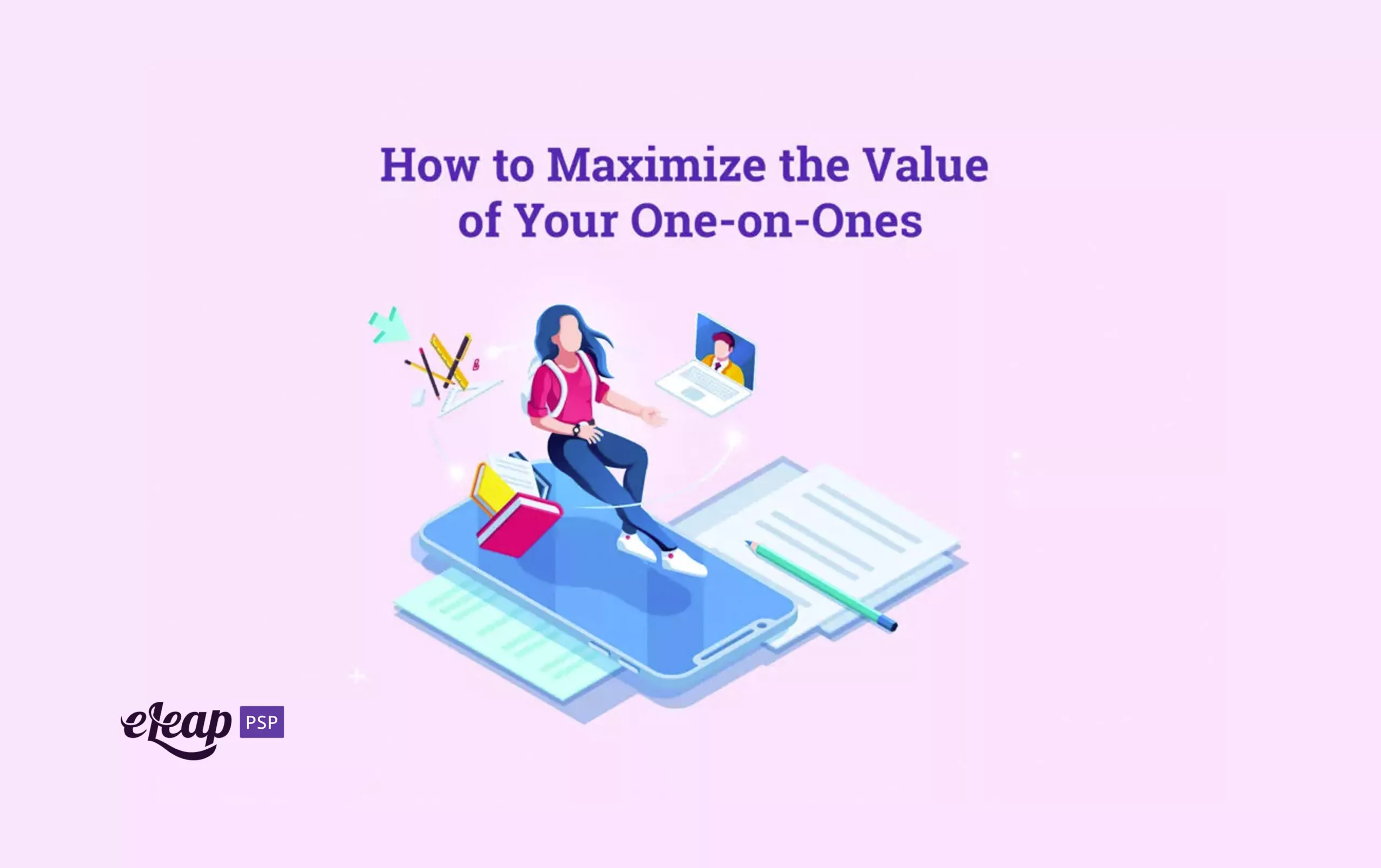How to Maximize the Value of Your One-on-Ones

Few performance management tools offer the value, traction, and transformative power of the humble one-on-one. Sure, they’re brief. They’re informal. They’re focused more on conversation than they are on structured teaching.
However, for all that, the one-on-one is your real chance to foster true change in employees. Because of that, you must get it right. You can’t afford for these to be shallow “checking-in” related meetings. Instead, they need to create a deep emotional connection with each team member, to develop a sense of psychological safety, and to focus the conversation on performance and people.
Not sure how to do that? You’re not alone. It’s one area where many managers struggle when it comes to PM. This post will walk you through critical tips to help ensure that you’re able to maximize the value of these tools.

Have Talking Points Ready
There’s an idea that because one-on-ones are informal, they don’t need any structure. That’s not the case at all. You need to go into these meetings prepared to guide the conversation’s flow. Doing so requires that you have at least a basic framework to follow.
Before the meeting, sit down and plan out talking points. Have the other person do the same thing. This ensures that you are both able to address things that matter to you.
Before the meeting, consider comparing lists and then figure out roughly how much time each item will take to cover. This will give you an idea of whether you can go over every item in your allotted time or if you should break the lists up.
However, resist the urge to create a rigid map. While talking points are important, it’s equally vital that your one-on-ones be fluid and relaxed. Make sure there’s some structure, but not too much.
Be Fully Present
Nothing kills the value of a one-on-one faster than if the employee realizes you’re not there. We get it. You have a thousand things going on. It’s natural for your mind to wander a little. Don’t let it get too far afield, though.
When you’re not fully present, you miss important points. Not only that, but the other person will key in on your disconnect, which destroys any value and trust that you’ve built up to that point. It tells them that you’re not invested in what’s going on, that you have more important things to do.
So, how do you ensure that you’re fully present? Take a few moments before the one-on-one to center yourself. Deep, mindful breathing can help you focus. You can also run through a few mental mantras to help you build the necessary focus. For instance, focus on the idea that you’re there to help the other person and you can only do that by being 100% present the entire time.
Take a few other precautions, too. Make sure that you’re not going to be interrupted by anyone in the office. Turn your phone on silent. Ensure that your computer is muted, too.
It’s all about creating a focused mindset and an environment conducive to being completely present. Doing anything less tells the other person that you don’t really care. It says they’re not all that important.
Start and End Positively
It’s important that you start the one-on-one on the right foot, and that you end it on a positive note, as well. That might sound like we’re encouraging sandwiched feedback – where you soften the blow of negative feedback by sandwiching it between two pieces of positive feedback – but that’s not the case.
What we’re talking about here is finding a way to start the one-on-one on a positive note. Share a team win, for example. Talk about a positive development within the company, or compliment the employee on something they recently did.
Doing this will help set the overall tone of the one-on-one so that when you begin problem-solving or providing constructive criticism, the employee is in the right mind state to receive it. Then, you need to end the meeting on a positive note. This might be anything, including just expressing confidence that with the new strategy in place, positive changes can occur.
Find Out How You Can Help Them
Employee experience is a critical consideration for employers today. One way to help build a more positive experience for your team members is to use one-on-ones to find out how you can help them. What can you do to build them up?
One example could be asking them about their career plans – where do they want to go? What do they want to learn? How can the company support that development?
This is about more than just developing human capital and creating a better hiring strategy. It’s about showing curiosity and genuine interest in the other person. It’s about making them feel valued and connected.
Be Thankful
Gratitude has an incredible, profound effect on the human psyche. By showing gratitude for an employee’s efforts, you tap into those benefits. That doesn’t mean you need to have a long, drawn-out speech about how you’re so grateful they’re part of the company. Really, it comes down to taking two seconds to say, “thank you”.
Being thankful, and expressing your gratitude no matter how briefly, is affirming and means a great deal to your employees. It’s a powerful thing, particularly if you’re able to talk about something that the employee is doing well and that you value.
Bringing It All Together
Creating and delivering effective one-on-ones isn’t something that’s going to happen overnight. Despite their informal nature, these powerful tools require forethought and planning. However, with time and effort, you can improve your delivery and maximize the value they offer. You can also maximize their impact on your team members, helping to improve morale, engagement, and performance across the board.